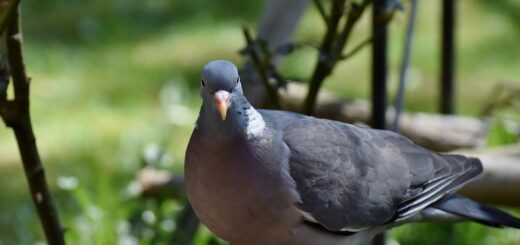Song Thrush
The Song Thrush: A Fascinating Bird Species
The Song Thrush is a beautiful and melodious bird that is native to Europe and Asia. It is known for its distinctive song, which is one of the most beautiful and complex in the avian world. In this article, we will explore the fascinating world of the Song Thrush, including its habitat, diet, mating habits, and conservation status. We will also delve into the cultural significance of this remarkable bird, as well as the threats it faces in the modern world.
Habitat and Distribution
The Song Thrush is a widely distributed species, found across much of Europe and Asia. It prefers wooded and shrubby habitats, including forests, woodlands, hedgerows, and gardens. It is a migratory bird, with populations in northern Europe migrating south for the winter. In the UK, the Song Thrush is a common sight in both rural and urban areas, often seen foraging for food on lawns and in parks.
One of the reasons for the Song Thrush’s success as a species is its adaptability to a wide range of habitats. It is equally at home in dense forests and open farmland, and can be found at a wide range of altitudes. However, like many bird species, the Song Thrush is facing increasing pressure from habitat loss and degradation, particularly in its breeding and wintering grounds.
Feeding Habits
The Song Thrush is an omnivorous bird, with a diet that consists primarily of insects, earthworms, and snails. It is known for its unique feeding behavior, which involves using a favorite stone as an anvil to break the shells of snails and other hard-shelled prey. This behavior is passed down from generation to generation, with young birds learning from their parents how to select and use the best anvils for their feeding habits.
In addition to invertebrates, the Song Thrush also eats a variety of fruits and berries, particularly during the winter months when insect prey is scarce. This varied diet allows the Song Thrush to thrive in a wide range of habitats, and makes it less vulnerable to fluctuations in food availability.
Mating and Reproduction
Like many songbirds, the Song Thrush is a monogamous species, with pairs forming strong bonds that can last for many years. During the breeding season, the male Song Thrush sings to attract a mate and defend his territory. The nest is usually built in a low tree or shrub, and is constructed from grass, leaves, and twigs, with a lining of mud and finer materials.
The female Song Thrush lays a clutch of 3-5 eggs, which she incubates for around two weeks. Both parents take turns feeding the chicks once they hatch, and the young birds fledge after around two weeks. The parents continue to care for the fledglings for some time after they leave the nest, teaching them important skills such as foraging and avoiding predators.
Cultural Significance
The Song Thrush has long been celebrated in human culture for its beautiful song and striking appearance. It has been a popular subject in art, literature, and music for centuries, and has been associated with various symbolic meanings and folklore. In many cultures, the song of the Song Thrush is seen as a harbinger of spring, and its presence is considered a sign of good luck and prosperity.
In addition to its cultural significance, the Song Thrush also plays an important ecological role as a seed disperser and predator of invertebrates. Its presence in a habitat can indicate a healthy ecosystem, and its decline in certain areas can be a warning sign of environmental degradation.
Conservation Status
Despite being a widespread and adaptable species, the Song Thrush is facing a number of threats to its survival. Habitat loss and fragmentation, particularly in its breeding grounds, is a major concern, as is the use of pesticides and other agricultural chemicals that can reduce the availability of its insect prey. Climate change is also having an impact on the Song Thrush, with changes in temperature and precipitation affecting its breeding success and the availability of food.
Conservation efforts are underway to protect the Song Thrush and its habitats, including the creation of protected areas, the restoration of degraded habitats, and efforts to raise awareness about the importance of this species. Citizen science projects, such as bird surveys and monitoring programs, are also helping to gather data on Song Thrush populations and track changes over time.
Conclusion
The Song Thrush is a remarkable bird species with a rich natural history and cultural significance. Its beautiful song and unique feeding habits make it a beloved and iconic species in many parts of the world. However, it faces a number of challenges in the modern world, and concerted efforts are needed to ensure its survival for future generations.
By learning more about the Song Thrush and the threats it faces, we can work together to protect this remarkable species and the habitats it depends on. Whether through conservation initiatives, habitat restoration, or simply enjoying the sight and sound of these beautiful birds in our own backyards, we all have a role to play in ensuring a bright future for the Song Thrush.
